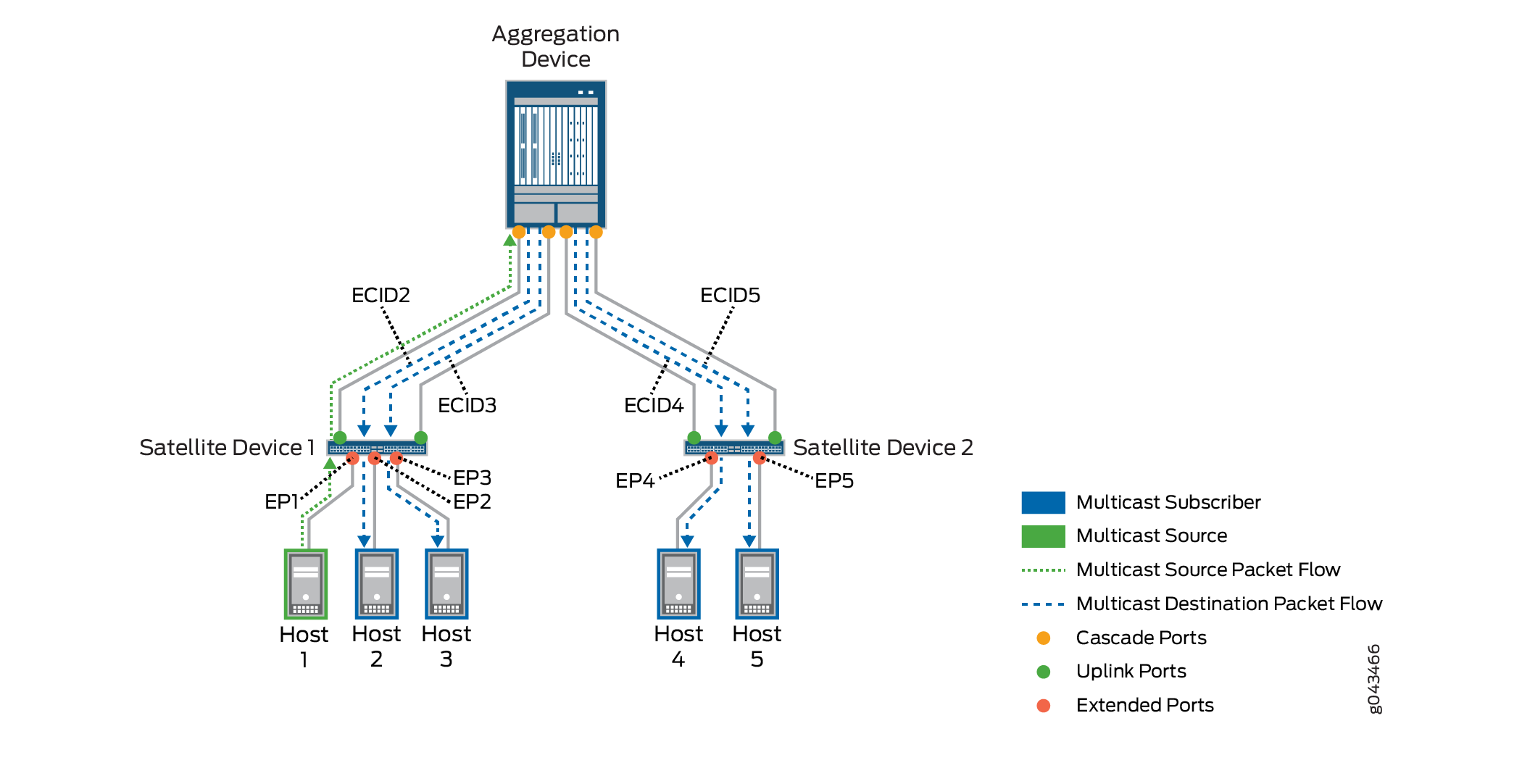Ingress Replication at the Aggregation Device to Satellite Devices
By default, Junos Fusion uses ingress replication on the aggregation devices to replicate and forward copies of packets to multicast destinations.
In ingress replication mode, the ingress aggregation device replicates the multicast packets and forwards them to every destination extended port. The data packet flow is similar to unicast data packet flow from the multicast source to each destination.
Figure 1 shows multicast source data packets received from a multicast source on an extended port, EP1, with traffic destined for endpoints connected to extended ports EP2 through EP5. Each extended port has an associated E-channel Identifier (ECID) value that the aggregation device uses to forward the data packet to each destination extended port. The aggregation device replicates the data packets for all multicast destination extended ports on all attached satellite devices, as follows:
-
Two copies for satellite device 1 (for EP2 and EP3)
-
Two copies for satellite device 2 (for EP4 and EP5)

The aggregation device sends each packet on the respective cascade ports to the satellite devices with destination extended ports. Multicast traffic destined for EP2 is tagged with ECID2, traffic destined for EP3 is tagged with ECID3, and so on for all the destination extended ports on both satellite devices. The satellite devices receive and forward the packets to their respective extended ports.
The aggregation device maintains multicast routing information and next-hop tables, including ECID label mappings to satellite devices and the corresponding extended ports. For a multicast destination on a satellite device, the aggregation device resolves the next-hop path through a corresponding cascade port that reaches the satellite device. When there are multiple cascade port links to a satellite device, the aggregation device load-balances the traffic to choose which cascade port to use.
Each receiving satellite device maintains tables that map the assigned ECIDs to the corresponding extended ports, and simply forwards outgoing multicast packets to the destination extended ports. The satellite devices do not maintain multicast routing information.
Other multicast destinations might be reached through local ports on the aggregation device, rather than through extended ports. For these destinations, the aggregation device creates and sends copies to those local ports directly.
Multicast support using ingress replication does not scale well for a large number of multicast destinations or higher bandwidth multicast traffic. Ingress replication increases aggregation device Packet Forwarding Engine processing load and consumes bandwidth on the links between cascade ports and uplink ports, potentially resulting in link oversubscription and latency among multicast recipients.
You can alternatively enable egress multicast replication, also referred to as local replication. Local replication optimizes multicast replication by distributing the replication load between the aggregation devices and the satellite devices that have multicast destination ports. However, local replication requires more control plane processing than ingress replication, which results in a slight increase in multicast group join and leave latency. See Egress (Local) Replication on the Satellite Devices for more information on how local replication works for different types of multicast or broadcast traffic.
